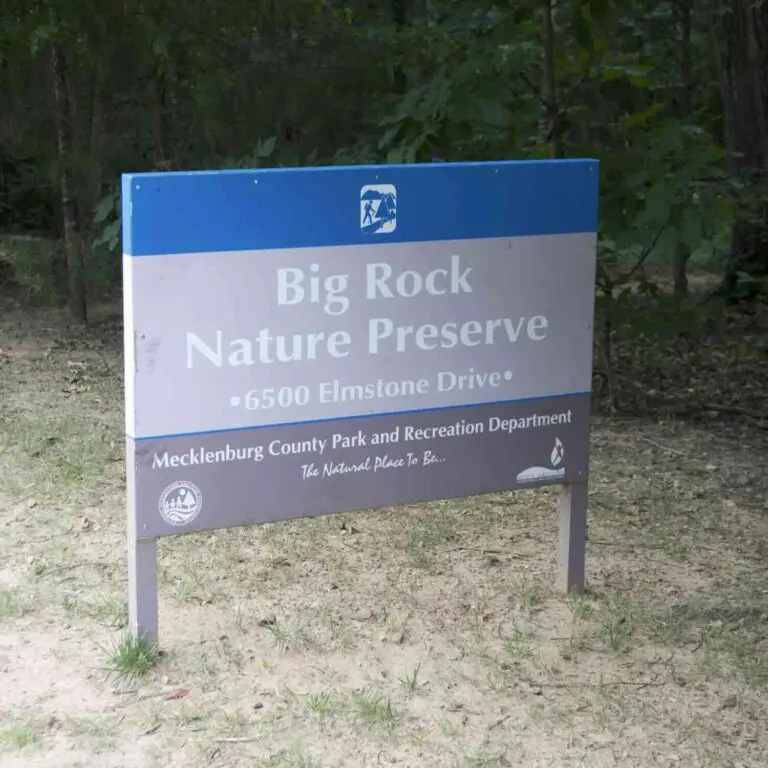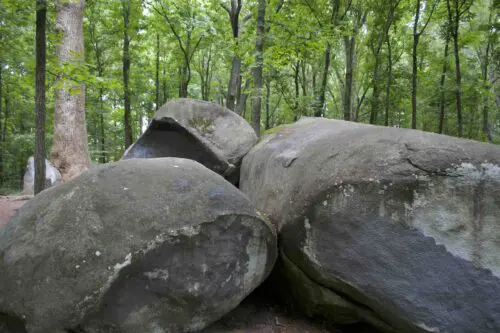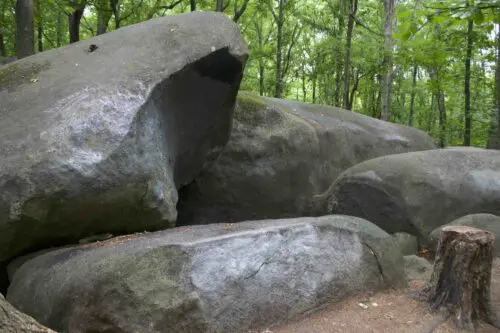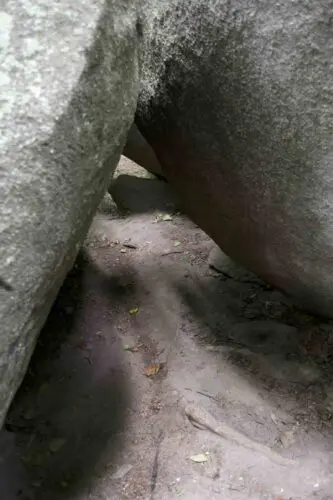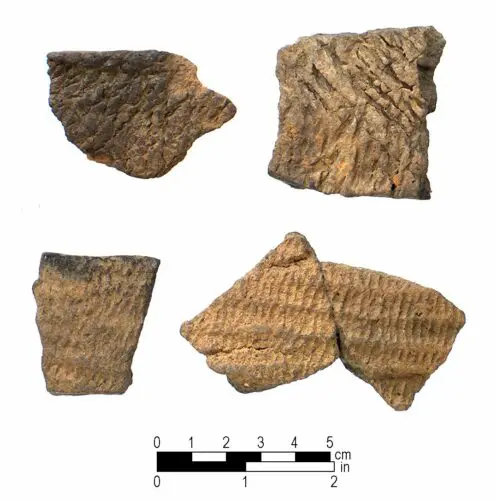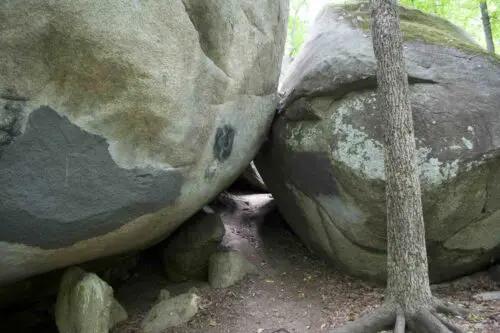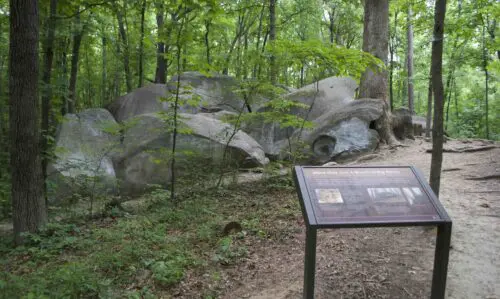Big Rock Nature Preserve, one of the 27 nature preserves in the Charlotte-Mecklenburg area, holds a significant historical treasure: the Big Rock Rock Shelter. This shelter, made up of the largest exposed boulders in Charlotte-Mecklenburg, likely served as a rendezvous point, campsite, and natural refuge for Mecklenburg County’s earliest inhabitants.
The preserve itself is located at 6500 Elmstone Drive. Big Rock Rock Shelter is a rock formation made up of large plutons. Plutons are essentially large igneous rocks or boulders in the case of Big Rock Rock Shelter. They are usually deep-rooted within pre–existing rocks and are not visible. We can see the massive boulders that make up the rock shelter today because the pre-existing rock has been eroded making the boulders visible. The main rock grouping is roughly 32,291 square-feet, and the largest is roughly 20 feet tall.
In March 1987, Fred Fisher conducted an archeological study as part of the historic designation process for the site. Wayne Whiteside, a local resident who lives near the rock shelter, financed the study. Because there had been a limited amount of disturbance to the ground, it was an excellent candidate for an archeological dig site.
Fisher’s study unearthed a fascinating timeline of habitation at the Big Rock Rock Shelter. The debris found in and around the shelter, some of which dates back as far as 7,000 years ago, paints a picture of a site that has been a high vantage point and a natural shelter for millennia. The presence of a natural spring (water source) nearby and the massive boulders creating a dry shelter further suggest the enduring appeal of the Big Rock Rock Shelter to early Indigenous peoples.
Fisher found evidence of use or habitation of the space, including broken pieces of ceramic materials known as potsherds, various stone and bone tools, sharp-edged waste materials (leftovers from the creation of a stone tool), plant remains, shells, animal bones, and a musket ball. Based on his findings, Fisher concluded that, while there is no conclusive physical evidence, it is likely that the rock shelter was a meeting ground, temporary shelter, and observation post for the first people that inhabited what would become Mecklenburg County.
The materials found in Fisher’s dig were from three periods: Early Woodland (c. 600-100 BCE), Mississippian (c. 1300-1450 CE), and Late Woodland (c.1650-1850 CE). Big Rock Rock shelter was used by Native Americans from all three time periods. There was not enough archeological evidence discovered to name the Native American tribes that may have used this site.
The Big Rock Nature Preserve exists to protect the Big Rock Rock Shelter and the surrounding grounds encompassing 22 acres. The preserve is managed by Mecklenburg County. It features informational displays about the formation and usage of Big Rock Rock Shelter and offers trails for visitors to enjoy. Big Rock Nature Preserve serves an important role: protecting the rock shelter and surrounding ground so future generations can enjoy its history, structure, and archeological significance.


